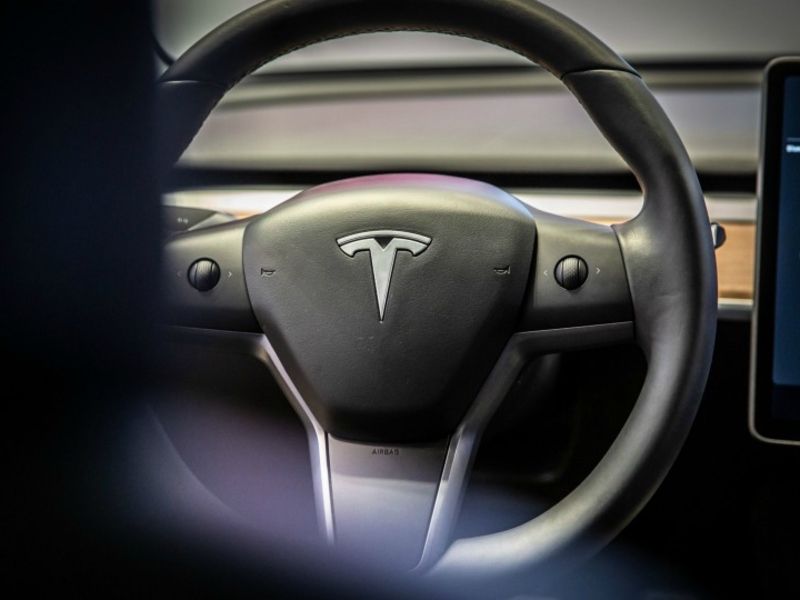
LONDON — The Dutch government’s forensic lab said on Thursday it had decrypted EV maker Tesla Inc.’s closely guarded driving data-storage system, uncovering a wealth of information that could be used to investigate serious accidents.
It was already known that Tesla cars store data from accidents, but the Netherlands Forensic Institute (NFI) said it had discovered far more data than investigators had previously been aware of.
The NFI said the decrypted data showed Tesla vehicles store information about the operation of its driver assistance system, known as Autopilot. The vehicles also record speed, accelerator pedal position, steering wheel angle and brake usage, and depending on how the vehicle is used, that data can be stored for over a year.
“These data contain a wealth of information for forensic investigators and traffic accident analysts and can help with a criminal investigation after a fatal traffic accident or an accident with injury,” Francis Hoogendijk, a digital investigator at the NFI, said in a statement.
Tesla did not immediately respond to a request for comment.
The Dutch lab said rather than seek the data from Tesla, it had “reverse engineered” data logs — a process where software is deconstructed to extract information — present in Tesla vehicles “in order to objectively investigate them.”
‘Who is responsible?’
The NFI investigated a collision involving a Tesla driver using Autopilot and a car in front of it that suddenly braked hard.
The investigation showed the Tesla driver reacted within the expected response time to a warning to resume control of the car, but the collision occurred because the Tesla was following the other vehicle too closely in busy traffic.
“That makes it interesting, because who is responsible for the following distance: the car or the driver?” said NFI investigator Aart Spek.
The NFI said Tesla encrypts its coded driving data to keep its technology secure from other manufacturers and protect driver privacy. Car owners can request their data, including camera footage, in the event of an accident.
Earlier this year, Tesla said it had established a site in China to store car data locally, as automakers came under growing scrutiny over how they handle information collected by vehicle cameras and sensors.
Decryption revealed more data
The NFI found that Tesla had complied with data requests from the Dutch authorities, but left out a lot of data that could have proven useful.
“Tesla however only supplies a specific subset of signals, only the ones requested, for a specific timeframe, whereas the log files contain all the recorded signals,” the NFI’s report said.
By decrypting Tesla’s code, the NFI now knows more about what kind of data the carmaker is storing and for how long, allowing for more detailed data requests, Hoogendijk said.
“You cannot claim what you do not know, so it’s helpful that we now know what else is being stored,” he said.
Hoogendijk added this also applies to other carmakers, as investigators simply do not know how much and what kind of data manufacturers store and for how long.
Tesla has remote access to the data, the lab said, which is periodically uploaded from cars and used by the company for product improvements or to fix malfunctions.
The NFI said it had obtained data from Tesla models S, Y, X and the mass-market Model 3 and shared the results at a conference of the European Association for Accident Research so that other accident analysts can use it.
NHTSA probe
In August, the U.S. National Highway Traffic Safety Administration (NHTSA) opened a formal safety probe into Tesla’s Autopilot system in 765,000 U.S. vehicles after a series of crashes involving Tesla models and emergency vehicles.
To date, NHTSA has identified 12 crashes that involved Tesla vehicles using the advanced driver-assistance systems and emergency vehicles. NHTSA said most of the incidents took place after dark.
Related case
Meanwhile, in a related case, the U.S. National Transportation Safety Board said on Thursday that both the driver and passenger seats were occupied during an April 17 fatal crash of a Tesla Model S in Spring, Texas.
Local police previously said witness statements indicated there was nobody in the driver’s seat when the car crashed into a tree and killed the two occupants.
The NTSB said a review of vehicle data indicates “both the driver and the passenger seats were occupied, and that the seat belts were buckled when the (event data recorder) recorded the crash.”
Based on a forensic examination of the steering wheel and information from the car’s event data recorder, the vehicle reached a speed of 67 mph during the 5 seconds leading up to crash.
The NTSB also said data indicates “the driver was applying the accelerator in the time leading up to the crash; application of the accelerator pedal was found to be as high as 98.8 percent.”
Tesla did not immediately respond to a request for comment.
The NTSB said that “no conclusions about how the crash happened should be drawn from the information in this investigative update” and all aspects of the crash remain under investigation.
The NTSB said its Recorders Laboratory repaired the car’s event data recorder and extracted critical precrash information from the unit.
The NTSB said in May that testing suggested the vehicle’s automated steering system was “not available” on the road where the accident occurred.
Last month, an autopsy report showed one of the two victims had a blood-alcohol level that exceeded the legal driving limit, according to an autopsy report. The car was destroyed by a post-crash fire and the victims badly burned.

